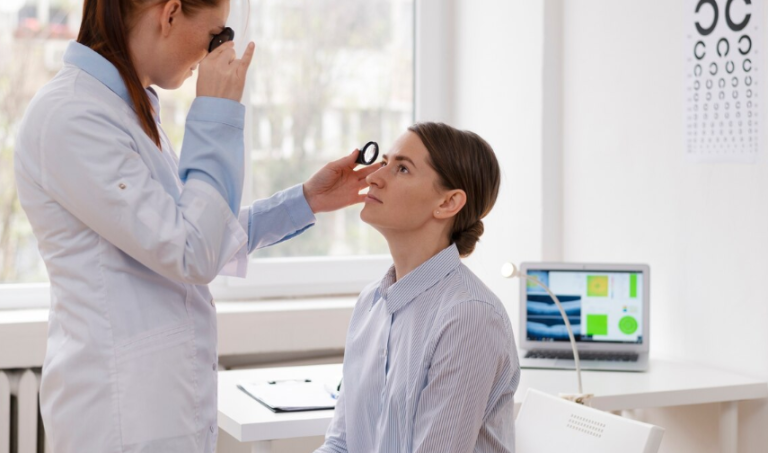In Home Nursing for Smooth Recovery and Monitoring
The demand for accessible, patient-centric healthcare has never mattered more. Among the emerging solutions, in home nursing stands out for its ability to offer high-quality care in the comfort of a patient’s own environment. For anyone facing post-surgery recovery, chronic illness, age-related concerns, or the need for routine medical attention, today’s data reveals that home nursing isn’t just a convenience—it’s transformative.
This article explores the key benefits of in home nursing for recovery and health monitoring, supported by trending statistics and real-world outcomes.
A Snapshot: Why Home Nursing is on the Rise
Recent studies indicate a dramatic increase in home-based healthcare services. More patients and families are opting for nursing care at home, fueling a multi-billion dollar global market. Data shows that in home nursing improves recovery rates, lowers readmission risk, and dramatically enhances patient satisfaction compared to conventional hospital stays or clinics.
According to a 2023 analysis, US home healthcare spending exceeded $110 billion, with double-digit growth expected this decade. Home nursing for smooth recovery and ongoing monitoring has become both a necessity and a top trend, especially as aging populations and post-pandemic health priorities reshape how and where care is delivered.
Read more also: detox centers in New Jersey
What Makes Home Nursing Unique?
Home nursing brings skilled professionals right to your door, providing assessment, medication management, wound care, monitoring of vital signs, and support tailored to individual health needs. The difference lies in the personalized attention, emotional comfort, and flexibility patients receive.
For patients transitioning from hospital to home, the continuity of in home care supports a smoother, faster recovery. By treating individuals in familiar surroundings, stress is minimized. Loved ones also benefit, as they can help participate in care without the disruptions of travel or unfamiliar settings.
The Statistics Speak for Themselves
Numbers from healthcare surveys consistently highlight the advantages of in home nursing.
- Over 90% of patients who receive skilled nursing at home report higher satisfaction compared to those discharged to rehabilitation facilities or long-term medical centers.
- Hospital readmission rates can be reduced by up to 30% when effective home nursing protocols are in place.
- Patients recovering from orthopedic procedures demonstrate, on average, 20% faster mobility regain when monitored consistently at home.
- For older adults, studies indicate a decrease in complications like falls, infections, and medication errors compared to group settings.
These statistics reveal that home nursing is a vital tool in ensuring optimal outcomes across diverse health scenarios.
Key Benefits of Home Nursing for Recovery
Personalized Care Every Step of the Way
Recovery from illness or surgery is as individual as each patient. Home nursing allows care plans for a New Jersey caregiver to be designed specifically for the patient’s needs, pace, and circumstances. Progress is monitored in real time, and interventions are adjusted quickly if needed.
Patients receive focused attention free from the time constraints often found in hospital environments. This one-on-one approach allows for earlier identification of complications, improved adherence to medication schedules, and better symptom control.
Lower Risk of Hospital-Acquired Complications
A major benefit recognized in statistical reviews is the dramatic reduction in risks usually associated with prolonged hospital stays. These include infections, bedsores, and exposure to antibiotic-resistant bacteria. With home nursing, exposure to such risks is greatly minimized, leading to safer recovery periods.
Emotional and Social Wellbeing
Several studies confirm that healing at home supports positive mental health outcomes. Patients surrounded by their family and personal comforts show lower rates of stress, anxiety, and depression. Regular visits from a dedicated nurse encourage open dialogue and a trusting relationship, fostering holistic wellbeing across physical and mental health.
Faster Transition Back to Independence
One of the key goals of recovery is mobility and self-sufficiency. Data suggests that people recovering at home regain their independence faster, as they’re encouraged to safely perform daily activities in their own living environment. This empowerment accelerates confidence and long-term wellness.
Seamless Coordination with Other Health Professionals
Skilled home nurses regularly liaise with doctors, therapists, and specialists, ensuring every aspect of care is aligned and up to date. This coordinated approach supports early intervention and prevents health setbacks. It also streamlines communication for family members, making it easier to stay informed and involved in the patient’s progress.
Enhanced Monitoring at Home Saves Lives
Advanced home healthcare increasingly leverages technology to monitor patient health from afar. Devices for remote blood pressure, glucose, or oxygen level tracking allow nurses to collect real-time data, detect early warning signs, and take action swiftly when thresholds are crossed.
- Remote monitoring devices, when combined with skilled home visits, can reduce emergency hospitalizations by up to 25%.
- Patients living with chronic illnesses such as heart failure, diabetes, or COPD have shown substantial improvements in disease management when enrolled in a monitored home nursing program.
- Sleep quality and overall quality of life is reported to be higher among patients who recover at home, with fewer disruptions or night-time interventions.
Continuous monitoring also means medication errors or adverse reactions are identified and managed promptly, increasing patient safety.
Home Nursing and the Trend Toward Preventive Care
Preventive strategies are most effective when regularly reinforced, and home nursing excels here. Trained nurses can coach patients and families on medication management, nutrition, exercise, and disease recognition. This hands-on education reduces avoidable hospital visits and teaches lifelong healthy habits.
The WHO reports that up to 80% of chronic illnesses can be managed with appropriate lifestyle interventions and monitoring. Home nursing makes these interventions practical and accessible.
Financial Benefits Backed by Data
While healthcare costs continue to rise worldwide, in home nursing represents a cost-effective path to recovery. By minimizing prolonged hospital stays, avoiding unplanned readmissions, and reducing transportation costs, home nursing delivers value not only for individual families but for health systems at large.
Health economists have found that every dollar spent on effective home care can yield up to three dollars in savings through avoided complications and hospital days. This is a convincing figure for anyone evaluating care options.
The Impact on Family and Community
Beyond the individual, home nursing has wide-reaching effects for family stability and community health. Families report less disruption to daily life, lower caregiver stress, and stronger involvement in recovery. Community health improves when individuals stay out of hospitals and contagious illnesses are less likely to spread.
Patients often feel more in control of their health, leading to higher satisfaction and a greater willingness to comply with medical directives.







